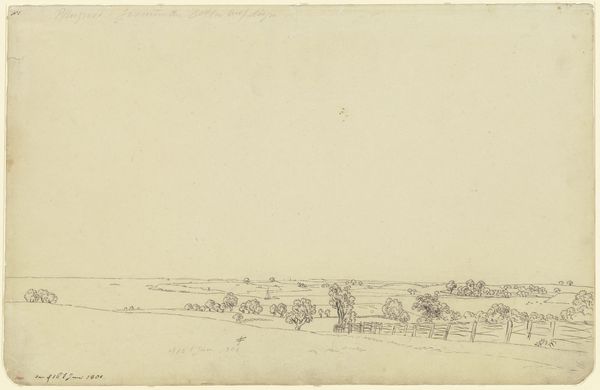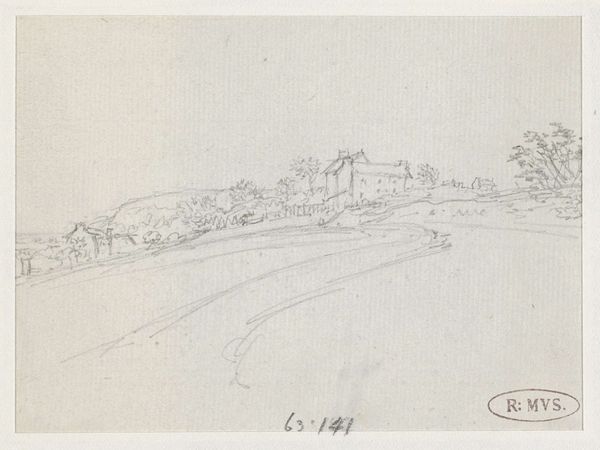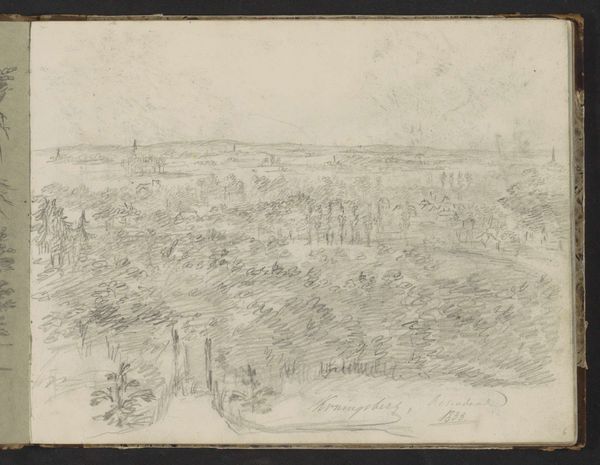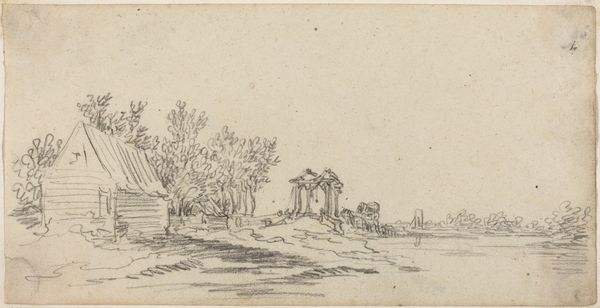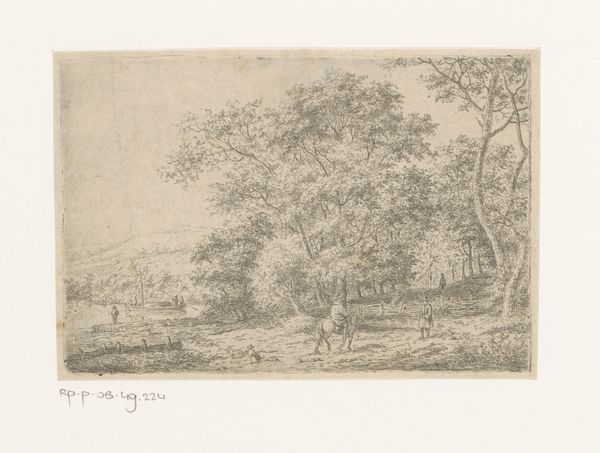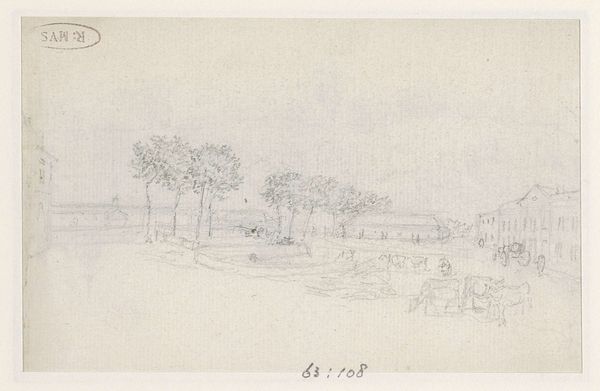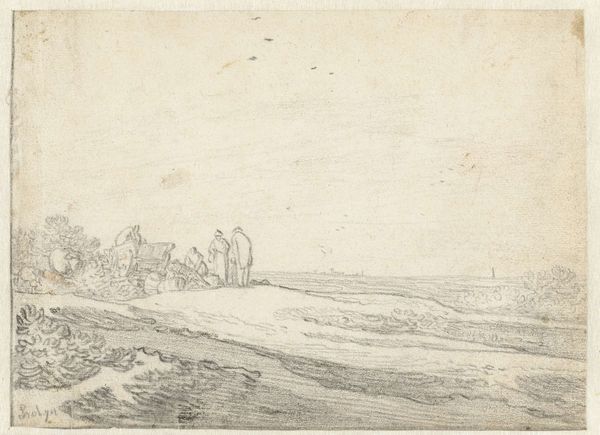
drawing, pencil
#
drawing
#
landscape
#
romanticism
#
pencil
#
realism
Dimensions: height 86 mm, width 129 mm
Copyright: Rijks Museum: Open Domain
Georges Michel made this landscape sketch sometime in the late 18th or early 19th century, using graphite on paper. It seems simple enough, but this seemingly innocuous drawing tells us a lot about the changing social and cultural status of landscape art in France at that time. Michel was one of many artists at the time who were turning away from the formal, idealized landscapes that had long been popular in academic painting. Instead, they were interested in capturing the beauty and drama of the natural world as they experienced it. The art institutions of the day favoured a more picturesque, ordered view of the landscape, often reflecting aristocratic land ownership and control. This sketch, by contrast, offers a more egalitarian view: a simple, open vista without any of the usual markers of social status. To understand this shift, we can look at the changing social and political landscape of France during this period: the rise of revolutionary and then Napoleonic ideals, and changing attitudes towards land ownership and use. By studying the history of landscape painting, we can better understand the role of art in shaping our perceptions of the natural world and the social structures embedded within it.
Comments
No comments
Be the first to comment and join the conversation on the ultimate creative platform.
